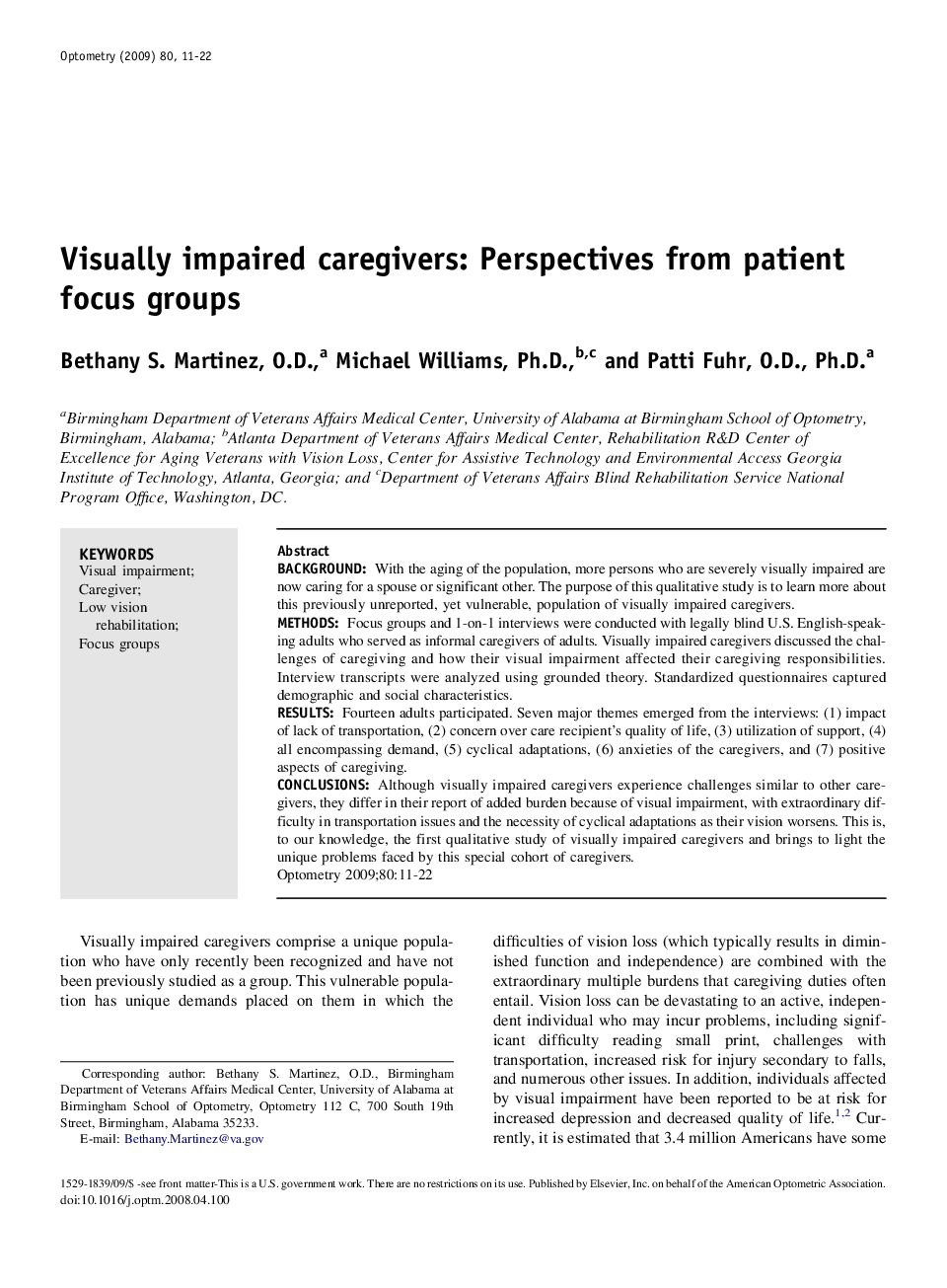| Article ID | Journal | Published Year | Pages | File Type |
|---|---|---|---|---|
| 2699567 | Optometry - Journal of the American Optometric Association | 2009 | 12 Pages |
BackgroundWith the aging of the population, more persons who are severely visually impaired are now caring for a spouse or significant other. The purpose of this qualitative study is to learn more about this previously unreported, yet vulnerable, population of visually impaired caregivers.MethodsFocus groups and 1-on-1 interviews were conducted with legally blind U.S. English-speaking adults who served as informal caregivers of adults. Visually impaired caregivers discussed the challenges of caregiving and how their visual impairment affected their caregiving responsibilities. Interview transcripts were analyzed using grounded theory. Standardized questionnaires captured demographic and social characteristics.ResultsFourteen adults participated. Seven major themes emerged from the interviews: (1) impact of lack of transportation, (2) concern over care recipient's quality of life, (3) utilization of support, (4) all encompassing demand, (5) cyclical adaptations, (6) anxieties of the caregivers, and (7) positive aspects of caregiving.ConclusionsAlthough visually impaired caregivers experience challenges similar to other caregivers, they differ in their report of added burden because of visual impairment, with extraordinary difficulty in transportation issues and the necessity of cyclical adaptations as their vision worsens. This is, to our knowledge, the first qualitative study of visually impaired caregivers and brings to light the unique problems faced by this special cohort of caregivers.
